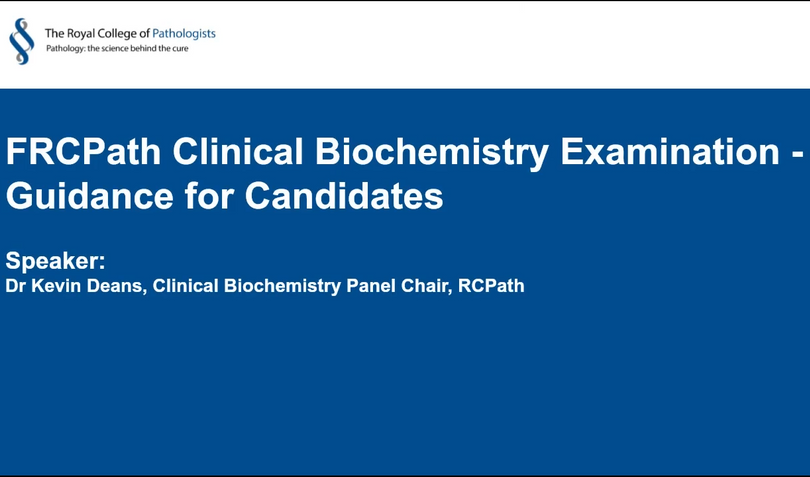Part 2 Module 1
Paper 1
This is a 3 hour objective structured practical examination (OSPE) where candidates are required to answer a series of 19 questions using a selection of material provided whether in paper format or as images/tables on an iPad. The selection of material will include:
- analytical outputs (e.g. electrophoretic strips, chromatography scans)
- clinical scenarios (e.g. sample requirements, investigation protocol questions)
- quality control and/or external quality assurance data
- analytical, physiological or pharmacological calculations
- One question will test communication skills using responses made in writing.
Candidates are given approximately 9 minutes per question with an additional 9 minutes at the end. This makes a total of 3 hours. Candidates can attempt the questions in any order and can decide how much time they wish to spend on specific questions within the 3 hour time window. Each question is marked out of 20, making a total of 380 marks, which is then proportionally reduced to give an overall percentage mark.
Paper 2
This is a 3 hour written practical which tests the candidate’s ability to address an analytical issue. This multi-part paper may test the ability of candidates to plan an experiment, record results, analyse and present raw data, draw appropriate conclusions and produce an action plan or give recommendations. The paper is marked on the basis of the written work produced and a total of 3 hours is allocated. The whole output is marked using the closed marking system, which is then converted to a percentage equivalent mark. Percentage marks are then combined from papers 1 and 2 to give a single percentage mark for the part 2 module 1 exam. 60% of marks come from paper 1 and 40% from paper 2.
NB there will be no old style wet practical using analysers, spectrophotometers, POCT equipment or samples. Candidates will not therefore require lab coats, pipettes, gloves, but should bring appropriate calculators, rulers, pencil and pens.


